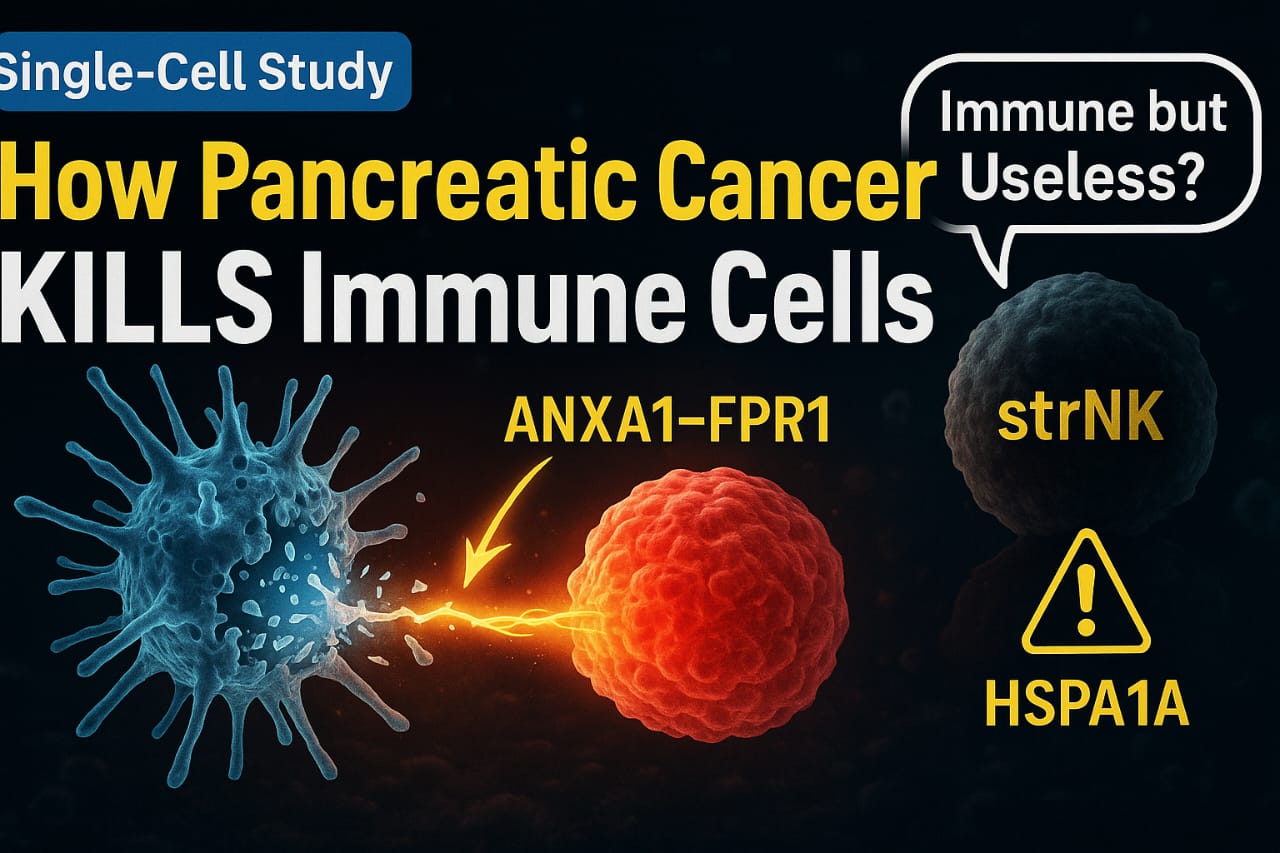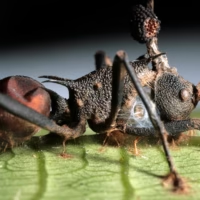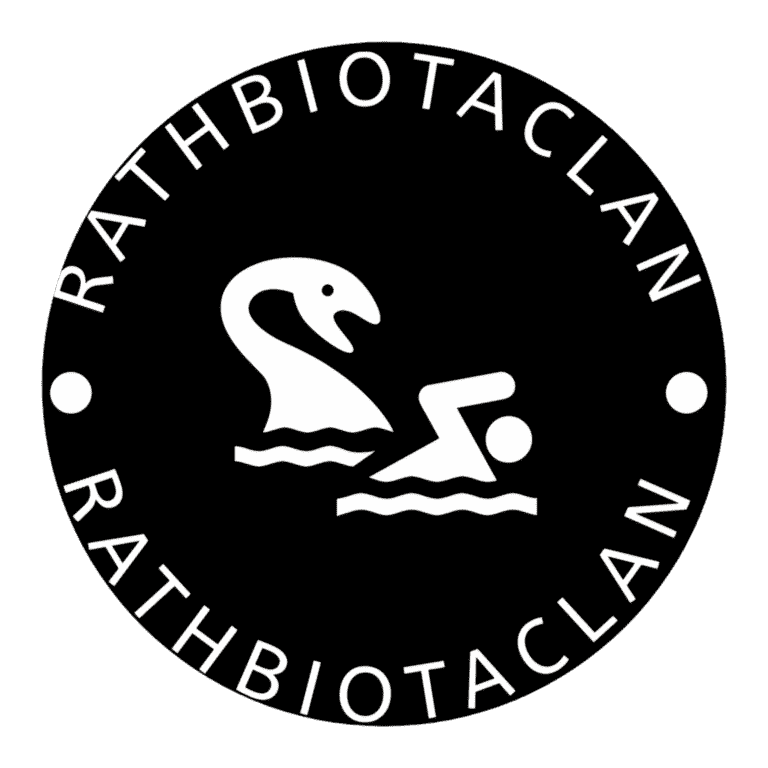Pancreatic ductal adenocarcinoma (PDAC) presents a significant challenge in oncology, accounting for approximately 8.5% of all cancer-related mortality and having a 5-year survival rate below 12%. Treating PDAC is tough, mostly ‘cause it just doesn’t respond to immunotherapies like other cancers do. Part of the problem is the tumor’s environment—it’s all complicated and kinda shuts down the immune system. There aren’t enough of the right immune cells around, and the whole setup makes it super hard for the body to fight back against the tumor.
A study utilized single-cell transcriptional analysis to dissect the evolving immunosuppressive TME during PDAC metastasis. So they looked at over 130,000 individual cells from 51 samples—like, healthy pancreas, early tumors, advanced ones, and even spread liver tumors from the same patients. Mixed their new data with existing stuff to get a bigger picture, right? Had to toss out sketchy cells and fix batch differences so everything played nice together. Ended up mapping how cell types shift, what they’re doing wrong functionally, and how they chat (or don’t) as the cancer goes from “meh” to full-on metastatic. Pretty wild how much changes once it starts spreading, honestly.
Pancreatic Cancer’s Stealth Moves: Directly Killing Key Immune Cells and Activating Harmful “Stress-Response” NK Cells to Escape Detection
The study revealed two critical mechanisms by which PDAC systematically evades the host immune system during its malignant transformation.
1. Direct Apoptosis of Dendritic Cells (DCs) via ANXA1-FPR1/3 Interaction:
Dendritic cells (DCs) are crucial antigen-presenting cells (APCs) responsible for capturing tumor-derived neoantigens and presenting them to CD8+ T cells, thereby initiating adaptive anti-tumor immune responses. However, PDAC TMEs consistently exhibit remarkably low infiltration levels of DCs.
The research identified a novel, direct mechanism by which PDAC tumor cells trigger the programmed cell death (apoptosis) of DCs. This occurs through a specific molecular interaction: ANXA1 (Annexin A1) expressed on epithelial tumor cells binds to FPR1 (Formyl Peptide Receptor 1) and FPR3 (Formyl Peptide Receptor 3) found on DCs.
The expression of ANXA1 on epithelial tumor cells gradually increases from healthy tissue to non-metastatic primary tumors and further to metastatic primary tumors. This escalating ANXA1 expression was also significantly correlated with worse overall survival in PDAC patients, suggesting its role as a prognostic biomarker.
In vitro experiments provided strong validation for this mechanism. When activated bone marrow-derived DCs (BMDCs) were treated with varying doses of ANXA1 protein, a significant induction of apoptosis was observed. This was further confirmed by western blot analysis, which showed that ANXA1 effectively upregulated the apoptotic marker cleaved caspase-3 while concurrently downregulating the anti-apoptotic markers MCL-1 and BCL-2.
The In vivo function of ANXA1 was further substantiated using both subcutaneous and orthotopic mouse PDAC models.
ANXA1 overexpression promoted tumor progression and led to a decrease in the density of both CD8+ T cells and CD11c+ DCs within the tumors.
Conversely, ANXA1 knockdown exhibited potent anti-tumor efficacy, significantly inhibiting tumor growth. Importantly, this anti-tumor effect was further enhanced when combined with anti-PD-1 blockade immunotherapy, which also increased the density of CD8+ T cells and CD11c+ DCs.
So, this study really drives home the point that when tumor cells directly trigger apoptosis in dendritic cells—not just through cytokines or other cells, like people thought before—it’s actually a big deal for creating that “immune exemptional microenvironment” in PDAC. Basically, as more and more DCs die off, their function just tanks, and that’s a major factor in why the immune system can’t do its job right around these tumors lead to a dampened activation and infiltration of cytotoxic CD8+ T cells**, thereby compromising the adaptive anti-tumor immune response.
2. Unveiling of Pro-Tumor “Stress-Response” NK Cells (strNK):
Natural Killer (NK) cells are vital components of the innate immune system involved in tumor surveillance. The study identified a novel subtype of NK cells, termed “stress-response NK cells” (strNK), characterized by the high expression of specific stress-related heat shock genes, such as HSPA1A, HSPA1B, HSPA6, and HSPB1.
Despite exhibiting robust proliferative properties, these strNK cells were found to possess diminished cytolytic (cell-killing) capabilities. Their cytolytic function was shown to be deficient, as indicated by a lower cell killing score and downregulated cytotoxicity-related genes.
Instead of contributing to tumor elimination, strNK cells play a role in *negative immune regulation and immune suppression** . This suppressive function is further supported by their high expression of certain Treg-related genes, including FOXP3, CTLA4, ICOS, and TNFRSF18. This suggests that these NK cells may contribute to immunosuppression within the PDAC TME, similar to how stress-response T cells (Tstr) are linked to immunotherapy resistance.
Clinically, a *high presence of strNK cells is significantly associated with a poor prognosis** in PDAC patients, implying a pro-tumor function and further undermining immune surveillance . The trajectory analysis also indicated that strNK cells have a relatively “independent” developmental roadmap compared to conventional NK (cNK) cells, which are rich in cytotoxicity-related genes and exhibit strong immune surveillance function.
In Conclusion, this comprehensive single-cell transcriptional study provides crucial insights into the sophisticated mechanisms PDAC employs to evade the immune system. By directly eliminating critical immune cells like DCs through the ANXA1-FPR1/3 axis and by co-opting other immune populations, such as strNK cells, into a pro-tumor, immunosuppressive role, PDAC creates an environment conducive to its progression and metastasis. These findings offer promising avenues for developing more effective immunotherapeutic strategies for PDAC by targeting the ANXA1-FPR1/3 interaction to reinforce DC function and by exploring ways to rejuvenate dysfunctional NK cell populations. While the study acknowledges limitations such as cohort size and potential compositional differences in public datasets, the validation of key conclusions through in vitro and in vivo experiments underscores their biological relevance.
Reference
Source: Nature


















